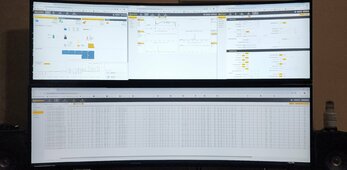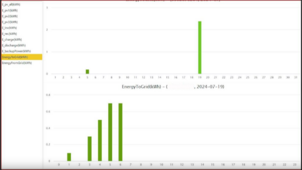@green mountain boys this is an excellent question, and a significant difference between "offgrid inverters" and "hybrid inverters"
At the end of the day, electricity requires a difference in potential to "flow". If there is nowhere for the current to go, it doesn't go anywhere. This is the same reason that you can take a 10kw PV array.. and if you only have 200w of loads, that array will only produce 200 watts (satisfying the load, but no more.. in this scenario, we're ignoring batteries and such as additional loads)
offgrid inverters are the same concept. They'll produce as much as they can up to their software or hardware limits, if there is enough differential/load. But, a 10kw inverter will only "produce" 200w, if there is 200w of load. There is nowhere else for the energy to go.
The situation changes on a hybrid inverter. By it's very nature, it's connected to the grid which is essentially an unlimited amount of load (when given the example of "inverter has a large load shut off". In this case, the power output is being controlled by software rather than potential... Software will *always* take some amount of time to react to varying loads. Usually this is in milliseconds, but it *can* be longer. When connected to the grid, this manifests itself in having varying amounts of power "leak" back to the grid. Utility companies understand this, which is why nobody has ever heard of a utility contacting a user for leaking back 3000w for a few milliseconds or similar.
Now, some people try to prevent the "leaking back for a few milliseconds" thing, by telling their inverter to always draw X amount of power. In theory, this would work. But in practicality, most people try to "always draw" small amounts. 100 to maybe 500 watts. So while the theory is sound, the reality is.. a large load shutting off will STILL leak a bit of energy to the grid.
At the end of the day.. If you have no intention of ever selling to the grid, and simply CAN NOT have energy power leak back under any circumstances then you should probably buy an offgrid inverter, or verify that your hybrid inverter has an offgrid mode that you can enable that physically disconnects the grid (which also means you'd need enough solar and battery to actually operate the loads without the grid)
Short of that, every hybrid inverter has this "leaking" behavior.




